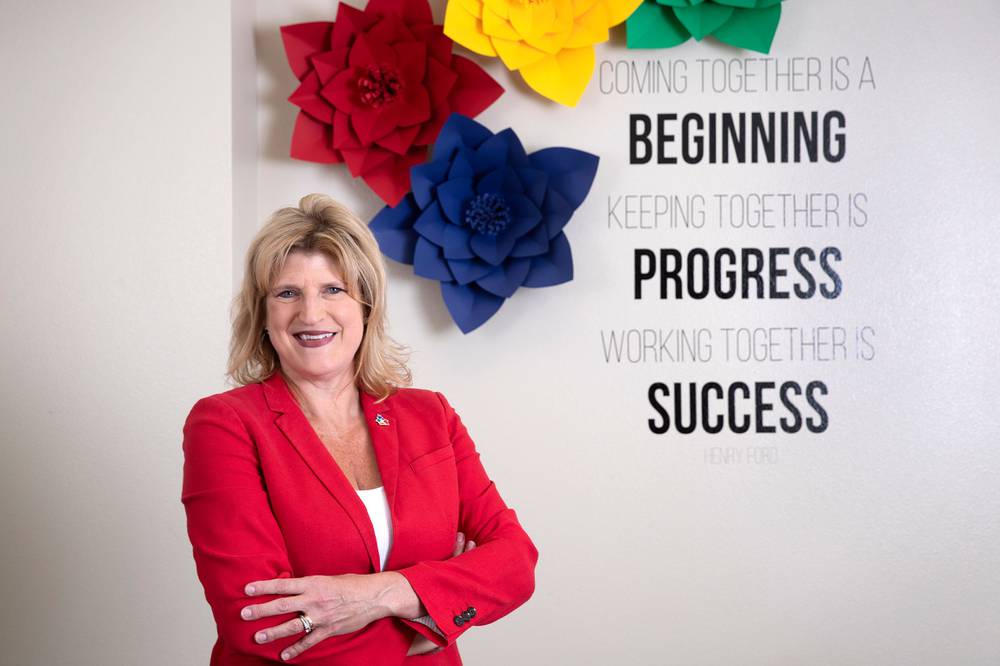With school resuming soon, Communities in Schools, a national dropout-prevention organization that supports 2,900 schools in 26 states, is gearing up to help students navigate a post-remote learning world. The Nevada chapter, the fifth-largest state office, supports 75 schools (53 in Southern Nevada alone), and offers invaluable services for students most in need.
The Weekly recently spoke to Community in Schools of Nevada CEO Tami Hance-Lehr about the organization’s role in student success and the importance of bringing the community into the education system.
What’s the overall mission for Communities in Schools? We really focus on our Title 1 schools. A Title 1 school means that 60% or more of the students qualify for free and reduced lunch, which means that they live below the poverty level. We put into every single school a full-time, well-trained site coordinator who works at that school each and every day. They work with the principals, administrators and the teachers, and they provide wraparound services and social emotional support.
The most effective way we keep our kids in school is through our one-on-one case management. Those site coordinators will case-manage about 10% of the school’s population, from around 65 kids, and they’ll work with them on attendance goals, behavior goals, coursework, academics, social emotional support. We’ll really work with them on a one-on-one basis to help them achieve those goals, and also just keep them motivated in coming to school.
How do you identify which students need services? If a teacher has a student that might be having behavior issues in class or comes to class late every day, they could refer them to Communities in Schools. Students are referred to us through school counselors, through administrators. Also, that site coordinator becomes part of the fabric of the school campus, so they will be in recess duty, they might be in the lunchroom, they may be sitting in on certain classrooms, identifying some of the behaviors of students. And a lot of our students are referred by their friends, or they self-refer.
In addition to providing a site coordinator, what other ways do you support students? We have a resource room at every single school that we’re in, and that resource room has all sorts of supplies—backpacks, pencils and pens, new shoes and socks, school uniforms, hygiene items, emergency food. In some cases, we might have laundry detergent or even a washer and dryer. The students that are referred to us come to that resource room if maybe they showed up in school and didn’t have their backpack, because maybe the backpack was locked in a house and they had maybe experienced being evicted, and so now all their school supplies are locked up.
We’re about removing every single barrier—it might be a tangible barrier, or there are other things going on at home or in their live. We can really work with that student to find out what their situation is, and that’s a really great way for us to start that dialogue.
Students returning to class this fall will face a world that’s been markedly changed by an ongoing pandemic. Are you modifying any of the services you provide? We are investing in some additional professional development for our site coordinators, because to your point, what we’ve all gone through—no matter if you had the best of circumstances or if you didn’t—everyone has a different level of how they are coming out of this. A lot of our students are going through or have experienced trauma. We’ve invested in our site coordinators, to make sure they have the social-emotional training and the trauma-informed care training to be able to go back into classrooms.
The other thing that we’ve changed is in the social emotional one-on-one case management area. A student might be OK with their grades and their attendance, but they still might have some social emotional and some mental health issues.
And we’re partnering very closely with the Clark County School District on their Lifeline program. We’re working with administrators and counselors and students who might be a red flag or might have raised their hand to say, “I need a little help.” We work very closely with the schools to do that case management—home visits, well checks, we’ll deliver supplies if they can’t pick them up from the resource room. We’ll deliver them directly to their house, which is another way for us to interact with them and see them. So there’s a lot of ways that we’ll continue to do that work we were already doing before the pandemic. We’re doing more of it as we continue into this new world.
What are some ways the community can help? We can always use volunteers, people who show up on school campuses, help us with field days or help us with some of the gardens. The other way is to donate supplies to the 53 resource rooms here in Southern Nevada. You can go on our website, CISnevada.org—there’s an Amazon Wish List, or you can donate monetarily. There are a lot of ways to get involved.


